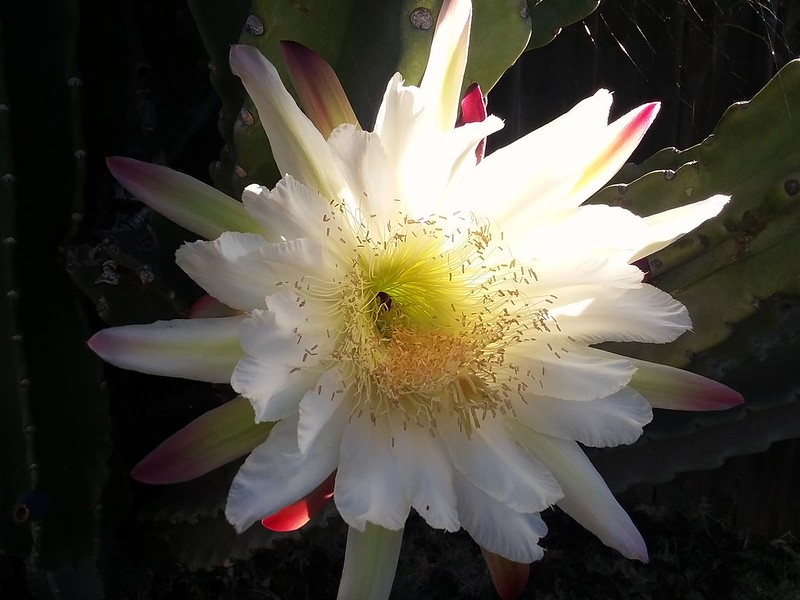Night Blooming Cereus Care
Night Blooming Cereus is a catch-all common name for several different species of spineless, flowering cactus. You may commonly find dragon fruit (Hylocereus undatus), Dutchman’s pipe (Epiphyllum oxypetalum), or Queen of the Night (which can be either Peniocereus greggii or Selenicereus grandiflorus) referred to by this name. They are sometimes called “orchid cacti,” and they bloom at night, and some bloom only once a year. Basically, when your cactus is ready to bloom, invite your friends over and have a late-night plant party to celebrate!
Potting mix
A sandy, well-draining soil mix will be fine for your Cereus. I confess, I didn’t have sand so mine is in a chunky mix of bark, perlite, charcoal, and a tiny bit of soil. It’s my go-to mix and so far my night bloomer (affectionately nicknamed “Freddie”) is thriving.
Watering
They don’t require as much water as some of our leafy tropical plants. I allow mine to dry out between watering, and then give it a good soak. Mine dries out fairly swiftly due to its placement in my house and the fact that it’s kept in terra cotta. Your watering schedule will ultimately depend on your environment (arid or humid), type of pot, amount of light, etc. Just don’t let them sit in soggy soil! In fall and winter, water less than during the growing season, and in mid-winter you can stop watering for about a month before resuming a normal watering scheduled.
Temperature & Humidity
These plants will tolerate normal household temperatures with ease. While they can tolerate chilly temperatures at night, do not leave them out when there is a risk of frost! They will appreciate humidity slightly higher than your average household, so consider keeping them grouped with other plants, or in a room with a humidifier, to help boost your humidity if your home is particularly dry.
Light
While these cactuses appreciate going outside when the weather is nice, they can still get sunburned or scorched if you leave them in direct sunlight. If you move your indoor Cereus outside for the summer like I do, find it a spot with filtered light so that it doesn’t get sunburned. Inside, an area with bright indirect light such as near a southern or western exposure window is a good choice for them.
Pruning & Propagating
You may find your orchid cactus getting a little unruly as it grows — they can become quite large and more than a little wild-looking. Pruning will help you control the size of your plant and may encourage blooms. Additionally, these cactuses can be grown from cuttings made at leaf joints, so pruning can can result in several new plants to keep or share.
If you’re looking for tips on growing your own night-blooming cactus or want to show yours off to fellow plant people, check out the HPH group on Facebook!



